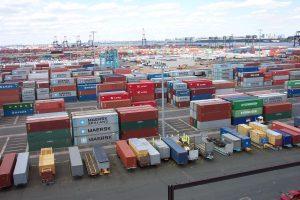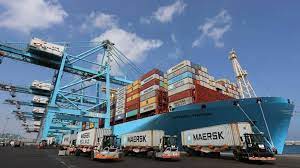Challenges in Protecting Large Warehouses and Ports
Executive Summary
In this article, we will explore the challenges faced when protecting large warehouses and ports. We will delve into the various security threats that these facilities encounter and discuss strategies to mitigate risks effectively. By understanding the unique vulnerabilities of these locations, security professionals can better safeguard valuable assets and ensure the safety of personnel.

Introduction
Protecting large warehouses and ports poses a myriad of challenges for security experts. These expansive facilities are often targets for criminal activity due to the valuable goods they house and the high volume of traffic they experience. Implementing robust security measures is essential to mitigate risks and prevent potential threats from causing significant harm.
FAQ
Q: What are the common security threats faced by large warehouses and ports?
A: Large warehouses and ports are susceptible to a wide range of security threats, including theft, vandalism, sabotage, unauthorized access, and terrorism.
Q: How can security professionals enhance the protection of these facilities?
A: Security professionals can improve protection by implementing access control measures, surveillance systems, intrusion detection technology, perimeter fencing, security patrols, and employee training programs.
Q: What are the implications of a security breach at a large warehouse or port?
A: A security breach at a large warehouse or port can result in significant financial losses, damage to reputation, disruption of operations, regulatory non-compliance, and compromise of sensitive information.
Top 5 Subtopics
Threat Assessment
Threat assessment is the process of identifying potential security risks and vulnerabilities to determine the likelihood of an attack or event. This involves evaluating external threats, internal vulnerabilities, and the impact of various scenarios.
- Conduct regular risk assessments to identify potential threats.
- Consider the motives and capabilities of potential attackers.
- Evaluate the effectiveness of current security measures.
- Develop contingency plans to address different threat scenarios.
- Collaborate with law enforcement agencies for threat intelligence sharing.
- Implement security protocols based on threat assessment findings.
Access Control
Access control is essential for regulating entry and exit points within large warehouses and ports to prevent unauthorized individuals from gaining access to restricted areas.
- Install biometric access control systems to authenticate employee identities.
- Utilize RFID badges or access cards for authorized personnel.
- Implement visitor management protocols for temporary access.
- Monitor access control logs for suspicious activities.
- Integrate access control systems with surveillance cameras for enhanced security.
- Conduct regular audits of access control systems to identify weaknesses.
Surveillance Systems
Surveillance systems play a crucial role in monitoring activities within large warehouses and ports to detect security breaches, track suspicious behavior, and provide evidence for investigations.
- Install high-definition cameras at key locations for comprehensive coverage.
- Use video analytics software to identify potential threats proactively.
- Implement remote monitoring capabilities for real-time surveillance.
- Store surveillance footage securely to ensure data integrity.
- Conduct regular maintenance checks on surveillance equipment.
- Train security personnel on effective surveillance system usage.
Cybersecurity
Cybersecurity is becoming increasingly important in protecting large warehouses and ports from cyber threats such as ransomware attacks, data breaches, and network intrusions that can compromise critical systems and operations.
- Implement multi-factor authentication for network access.
- Conduct regular vulnerability assessments to identify and patch security gaps.
- Train employees on cybersecurity best practices to prevent social engineering attacks.
- Backup data regularly and store it in secure offsite locations.
- Monitor network traffic for unusual patterns or anomalies.
- Collaborate with cybersecurity experts to develop a robust defense strategy.
Emergency Response Planning
Emergency response planning is crucial for preparing large warehouses and ports to respond effectively to security incidents, natural disasters, accidents, and other unforeseen events.
- Develop emergency response protocols for different types of scenarios.
- Conduct regular drills and exercises to test response capabilities.
- Establish communication protocols for coordinating emergency responses.
- Designate emergency response teams and assign roles and responsibilities.
- Collaborate with local emergency services for coordinated response efforts.
- Review and update emergency response plans regularly to reflect changes in the operating environment.
Conclusion
In conclusion, protecting large warehouses and ports from security threats requires a multifaceted approach that addresses physical, operational, and cybersecurity risks. By implementing comprehensive security measures, conducting regular risk assessments, and staying updated on emerging threats, security professionals can enhance the safety and security of these critical facilities.
Keyword Tags
Warehouse Security, Port Security, Threat Assessment, Access Control, Surveillance Systems, Cybersecurity, Emergency Response Planning
